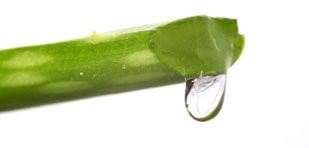What is aloe good for?
Aloe, a popular houseplant, has a long history as a multipurpose folk remedy.

For thousands of years, aloe vera has been used as a natural medicine. No other natural product contains such a large number of properties useful to humans.
Though the aloe vera plant looks like a cactus, it is actually a member of the lily family. There are more than five hundred different species of this commonly known household plant. Known by many other scientific-sounding names, such as Curacao aloe, Barbados aloe, and even lily of the desert, most of us just call it aloe. Below are some of the more common uses for aloe vera:
* Soothes skin injured by burns, irritations, cuts and insect bites.
* Relieves itching, swelling, and irritated skin.
* Improves the effectiveness of sunscreen products.
* Eases digestive complaints.
* Heals skin conditions such as eczema, psoriasis, or acne.
* Aids musculoskeletal conditions such as arthritis or rheumatism.
Many of the skin care products containing aloe vera are also fortified with Vitamin E and collagen to keep the moisture in and help maintain the skin’s elasticity and suppleness. Today, aloe vera and skin care products seem to go hand in hand. Commercial products containing aloe vera are used by millions of people worldwide.
How to Grown Your Own
Aloe plants make for great houseplants. If you live in a warm climate, you could put them on a deck or even plant them, however they are extremely frost tender.
- For outside: Plant in full sun or light shade.
- Inside: Keep the plant in its own container and place near a sunny window.
- Watering: Remember Aloe Vera is a succulent, which means it doesn’t need a lot of water. It actually stores water in its leaves and roots. In the winter, Aloes go through a dormant stage and won’t require a lot of water. In the summer, wait until the soil is dry, then completely soak the plant. Allow it to dry out before your water it again.
How to Use It:
When you find yourself in need for some aloe, break off a lower leaf and apply the gel to the affected area. If necessary, use a knife to cut the leaf open.
This article was published by the staff at Farmers' Almanac. Do you have a question or an idea for an article? Contact us!






